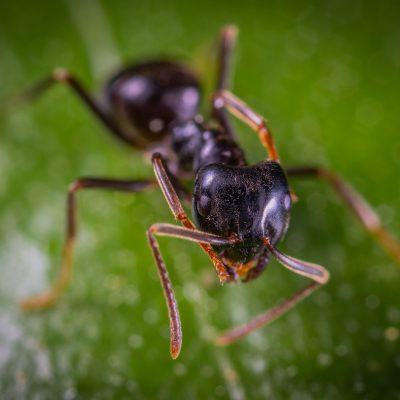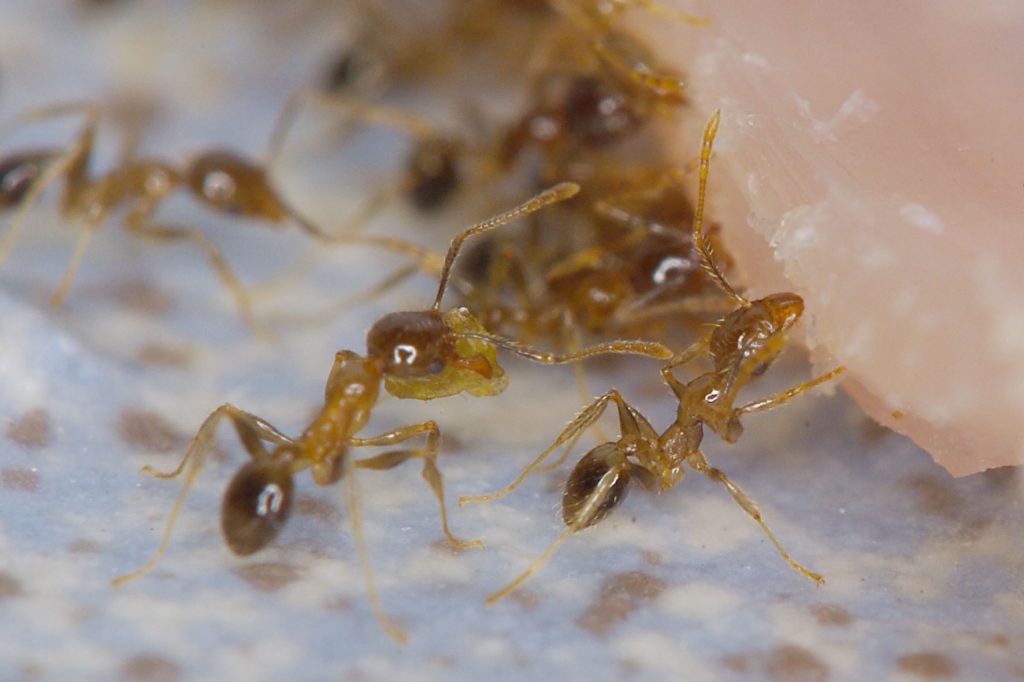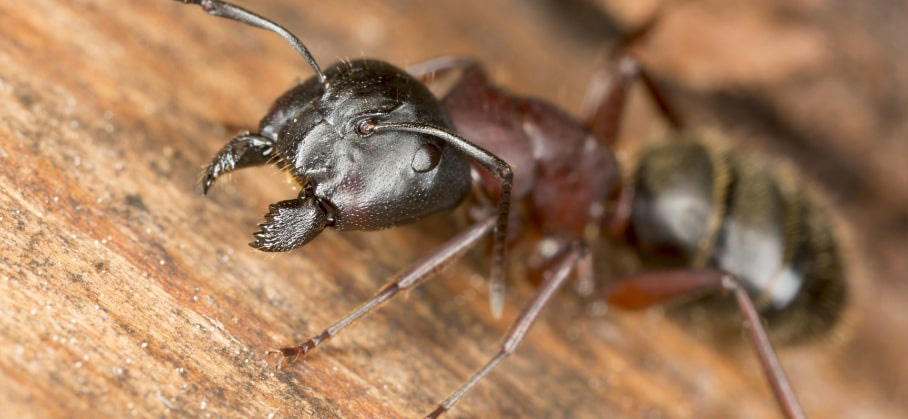About Ants and Ants Treatment

Know Your Ant Enemy Before Ants Treatment
General Info For Ants Treatment
Ants are tiny creatures – roughly 1mm-50mm long. However, they can still cause severe damage to your food supplies by contamination, as well as to your property’s structure, equipment, and appliances, particularly when they start to multiply and build nests. This is why adequate ants treatment is required so that your property does not get contaminated and damaged.
Ants have long bodies with tiny waists but swollen abdomens with a number of knobs at the waist, which are hard lumps, and they also have six legs.
They have antennae which appear thread-like to have elbows, and their eyes are usually large and well separated.
If they have wings, they tend to be clear with visible veins and cells.
Their life cycle of several weeks to several months, depending on the species, consists of egg, larva, pupa, and then adult. When they are born as adults, they are fully-grown as their exoskeleton stops them from getting any larger. Our ants treatment at Buggo Pest Control stops growth and prevents future infestations.
Ants are either from the caste of a queen, a female worker, or a male, and their life span depends on the caste. Males live for only a few weeks and die once they’ve mated, and workers live for several months up to 7 years and queens can live for decades.
Various species will swarm in huge numbers as the winged males and females disperse and reproduce.
It’s important to remember that ants live in colonies which can hold up to half a million ants. Contact us today for an ants treatment quote.
Top 3 Sydney Ant Pests

Coastal Brown
They are a light brown in colour almost gingery and have shiny dark brown abdomens.
Majors are 3.5-4.5mm long, whereas the minors are 2-3mm in length.
These ants are occasional stingers and tend to nest in the ground but really love to invade buildings where there are meat and fatty foods.

Black House
They measure 2.5mm in length and are often found in domestic environments in cracks and gaps beside pathways. They are also common in wooded areas and tend to nest under rocks and woodpiles.
Little black ants have a sting, but it is weak and ineffective to cause any harm.
They like to enter houses for food as they have a preference for sugary foods.

Carpenter
They have distinctive heart-shaped heads with large jaws and elbowed antennae.
They like to eat dead and living insects, fruit, and plants outside, but if they’re indoors, they tend to feed on meat, sugars, and even pet food! They don’t eat wood, but they tend to move it for their nests as their colonies are usually in moist wood, including rotting trees, tree roots, and logs.
Signs of Ant Infestation
If you have signs of an infestation of any live ants, then you’re very likely to end up having a problem, and you’ll need to do something about them fast, particularly if they are somewhere like your kitchen. If you see any of these signs, it is highly likely that you will require ants treatment.
Ant Trails
A good way to find out if you have ants living with or next to you is by checking whether you have any ant pathways. Some ants will lay down a trail to a food supply, which attracts the ants because of the pheromones.
Ant Nests
Ants live in nests in a variety of places and which look like small piles of soil. They also like to make their nests in the dark, quiet areas such as in walls or cracked pavements.
Live Ants
If you see an ant either on its own or with just a couple of others, you can be sure they’ll get thousands literally nearby.
Ants Infestation Signs & Prevention Tips
How to Get Rid of Ants
1. Identify Your Ant Pest
Depending on where you live, if you have discovered you have got an infestation of ants in your home or workplace, you should first of all work out what kind of bug you’ve actually got before you plan how to rid yourself of them.
Because there are so many types of ant pests, before you go out buying ant spray or calling in the experts you should first of all note the characteristics of the ant so you know what you are dealing with.
If you’re still unsure, consult the experts.
2. Choose Your Method
DIY Solutions (Not recommended)
Once you’ve found the ants’ nest, you can try spraying it with an insecticide that contains bifenthrin, permethrin, or deltamethrin. Remember, different ants prefer different foodstuffs, so there isn’t a one-size-fits-all when it comes to ridding yourself of these pests.
Professional Services
Or, you can do the most sensible thing and call the experts so you know that the nest will be totally eliminated so you don’t have to worry about this problem in the future. .
Professionals can help you prevent infestation and can easily deal with any outbreaks if you already have an ants’ nest within or near your building. Luckily, Buggo Pest Control can help you out with our ants treatment.
Frequently Asked Questions
Some ant species can be controlled using ant baits, while others this may not work as well. In most cases, the key to success is following the ants back to their colony and treating the colony directly. In any case Buggo has the experience to identify the species properly and help you get rid of ants from your kitchen for good.
Fire ants are known to deliver a powerful sting that created painful and itchy welts. If someone is allergic, the bites can be especially uncomfortable. These types of ants should always be exterminated by a professional.
Keep in mind that any species of ant can contaminate your food and that spotting a few ants is a sure sign of a larger infestation. You will want to act quickly.
Talk to a Pest Control Expert
1. Call
Call us so that our experts can get back to you with detailed questions regarding the size of your property and type of pests they have to deal with.
2. Quote
We provide free quotations for our pest solutions depending on your property size and number of days we need to work.
3. Treatment
We offer appointments according to your convenient dates. All our pesticides and disinfectants are safe for pets and children.
4. Aftercare
Don't hesitate to call us if you notice any pests after we leave. We will come back and resolve the issue so that you don't have any complaints regarding our service.
